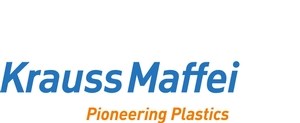Around 2010 in the automotive industry, the need arose for lightweight parts using preformed textiles made out of continuous (carbon) fiber layups infused with epoxy resin. There had been a few applications (e.g. roof element of the BMW E92) before that already using high-pressure resin transfer molding (HP-RTM), but at relatively low production volumes.
The preceding variant of this technology, vacuum-assisted resin transfer molding (VARTM) infiltration and autoclave curing had been widely established, especially in the aviation industry and characterized by long infiltration and cure times and thus mostly suitable for low production volumes—but eventually large part sizes. This time, the focus moved to significantly higher production volumes and out of the niche of sports cars.
In that year, KraussMaffei introduced a metering system explicitly designed for HP-RTM 2K epoxy resin metering and mixing that chemical suppliers started to bring to the market.
What are the main advantages of HP-RTM?
For processing fast-curing, highly-reactive epoxy resin systems—that are prerequisite for short cycle times—there was the need of a metering and mixing concept that would mix the components using high-pressure impingement with no dynamic mixer and over a self-cleaning mix head that would not require solvent flushing.
In 2013, the first HP-RTM systems went into automotive serial production, making parts for up to 30,000 vehicles per year. Step-by-step, other process variants such as compression RTM and wetmolding (for more two-dimensional parts) as well as options for surface conditioning by overmolding of an RTM part in an adjacent process step or even RTM with thermoplastic matrix became available.
This webinar will introduce those technologies; show characteristics, advantages and typical applications; and point out their huge potential for aviation applications.
Agenda:
- Moving towards HP-RTM: revolutionizing traditional composite manufacturing
- Process schematics, characteristics and automotive applications
- HP-RTM in aviation: requirements and potential
- Outlook of HP-RTM












